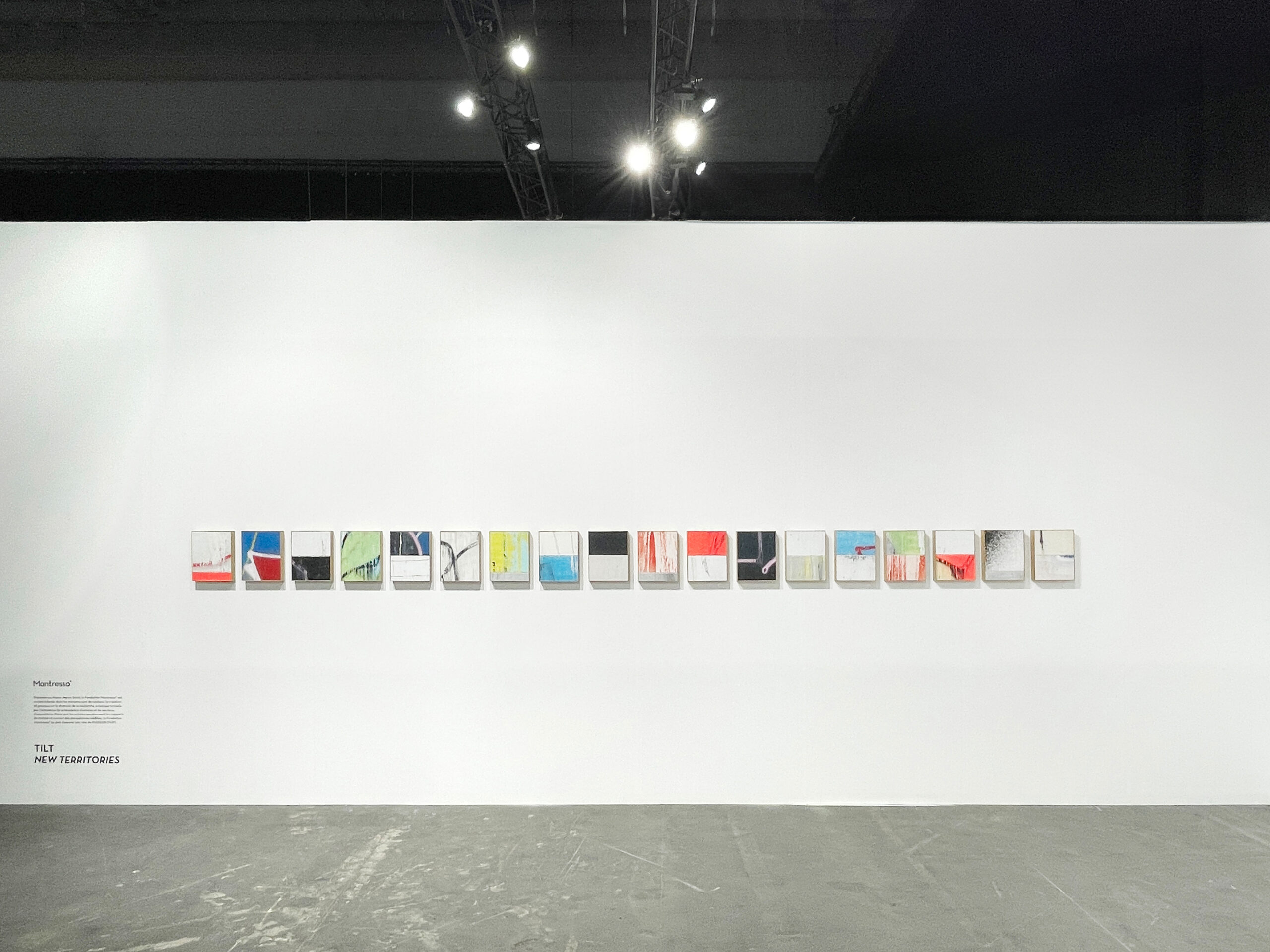NEW TERRITORIES - A solo presentation by TILT at Art Genève with Fondation Montresso
NEW TERRITORIES - A solo presentation by TILT at Art Genève with Fondation Montresso
Tilt. New territories
In the early 1920s, while contemplating the tiny specks and splashes of colour in Rembrandt’s The Holy Family, Hans Hartung’s passion for detail began to take shape, leading to the invention of a singular style that would mark the history of abstraction. Later, the rhythms and forms borrowed from fragments of his own work would become the material for new canvases, in a way self-referential.
Tilt, on the other hand, has been involved in the history of graffiti writing, based on the drawing and painting of letters, since the late 1980s, while at the same time producing works in his studio that are part of the field of contemporary art. Since 2016, he has been creating series of abstractions by altering the scale of enlarged and decontextualised details, in infinite variations of all-over where snatches of letters and graphic signs, flat areas, drips and explosions of colour can be seen.
A century after Hans Hartung, detail in painting may have changed context and meaning, but it retains a formidable capacity to destabilise our gaze by creating new pictorial and mental spaces.
From his recent trips to Hong Kong, Manila and Miami, near Little Haiti, Tilt retains the idea of worlds that are sometimes insidiously transformed, spaces where margins and centres, authorities and dissidents, memory and oblivion collide more than ever. But walls everywhere retain their history, made up of traces, erasures and dismantlings, and this is what New Territories tell us.
Painting these same images on the clay of Moroccan pottery is part of a distant tradition that combines the utilitarian and the decorative, repetition and invention. Something of the culture of graffiti artists from all over the world also materialises here: the place given to encounters and exchanges, to the very possibility of an essential ‘in-common’.
Dans la contemplation de minuscules taches et de projections de couleurs qu’il observe au début des années 1920 dans La Sainte Famille de Rembrandt, se précise la passion de Hans Hartung pour le détail, préalable à l’invention d’un style singulier qui marquera l’histoire de l’abstraction. Plus tard, ce sont des rythmes et des formes empruntés à des fragments de ses propres travaux qui seront le matériau de nouvelles toiles, en quelque sorte autoréférencées.
Tout autre est l’univers de Tilt, qui participe depuis la fin des années 1980 à l’histoire du graffiti writing, fondé sur le dessin et la peinture de lettres, tout en produisant en atelier des œuvres qui s’inscrivent dans le champ de l’art contemporain. Depuis 2016, il crée ainsi des séries d’abstractions en modifiant l’échelle de détails agrandis et décontextualisés, en variations infinies d’all over où l’on repère des bribes de lettres et de signes graphiques, d’aplats, de coulures et d’explosions colorées.
Si, un siècle après Hans Hartung, le détail en peinture a changé de contexte et de sens, il conserve une formidable capacité à déstabiliser notre regard en créant de nouveaux espaces picturaux et mentaux.
De ses voyages récents à Hong Kong, Manille, et Miami, du côté de Little Haïti, Tilt retient l’idée de mondes qui se transforment parfois insidieusement, d’espaces où se heurtent plus que jamais marges et centres, autorités et dissidences, mémoire et oubli. Mais partout les murs conservent leur histoire, faite de traces, d’effacements et de démantèlements, et c’est cela que racontent les New territories.
Peindre ces mêmes images sur l’argile de poteries marocaines relève d’une lointaine tradition associant utilitaire et décoratif, répétition et invention. Quelque chose de la culture des graffeurs du monde entier s’y matérialise aussi : la place donnée à la rencontre et à l’échange, à la possibilité même d’un indispensable « en-commun ».
Evelyne Toussaint





